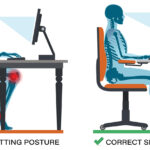Surgeries are rising in private hospitals, but too many studies fail to ask whether real benefits exist, according to one expert.
Rates of spinal fusions for back pain continue to rise in private hospitals despite the lack of evidence for their benefit, according to a leading Australian orthopaedic surgeon.
Professor Ian Harris told the audience at the Australian Pain Society Annual Scientific Meeting in Canberra earlier this month that new research he has been a part of revealed rates of spinal fusion surgeries have grown in the private sector over the last 20 years.
The paper, which is currently under review and is expected to be published in the coming weeks, suggests rates have remained relatively unchanged in the public sector.
It was concerning to see overservicing in the private system, the Sydney-based orthopaedic surgeon said.
He attributed part of the discrepancy to the financial incentives in play in the private sector.
But the biggest driver was a misunderstanding of the evidence base, or lack thereof, underpinning these surgeries, said Professor Harris, who researches the efficiency of surgical interventions.
“Physicians, surgeons, practitioners, people get hung up, they know that what they do works, and they hang on to observation, not experimentation. And you get this reaction [where] physicians are not prepared to discard therapies validated by both tradition and their own experience,” he explained.
He said the standard of evidence needed to be higher for such invasive interventions.
For example, a 2020 review comparing the effectiveness of common surgeries for chronic musculoskeletal pain conditions found only 1% of 912 randomised controlled trials for spinal fusion compared the effectiveness of doing the surgery with not doing the surgery.
What’s more, only two of these nine trials (involving 360 of 1429 patients) found spinal fusion surgery resulted in a statistically significant and clinically important improvement compared with non-surgical approaches, such as cognitive interventions or exercise.
The results were similar for the 15 most common orthopaedic surgical procedures for chronic musculoskeletal pain, including rotator cuff repair and total hip and knee replacements.
Only nine in almost 7000 randomised controlled trials – just over 0.1% – favoured doing the surgery over not doing the surgery.
Professor Harris called much of the research done on surgery for chronic pain as “tooth fairy research”, a term coined by an American scientist to describe the way clinicians and researchers get sucked into unsubstantiated avenues of research.
“You could do studies where you found out correlations between where the tooth was left and how much money was received, or the type of tooth and the age of the child, or whether the tooth fairy has been giving more money over time, and whether that correlates with inflation. And they could present all this science without ever asking whether there is a tooth fairy,” he told delegates.
The field of surgery for chronic pain was similar, he said.
Many studies had jumped the gun and were looking at the “best” method or approach for various surgeries, instead of building a solid evidence base that doing the surgery was better than not doing it at all, he said.
When people asked what the point was in doing more RCTs into surgery for chronic pain, Professor Harris said he brought up the 2020 review, saying “Well, most of the time when we finally get around to doing an RCT, we find it’s not that helpful”.
Professor Harris highlighted several reasons why there were so few randomised trials of surgery for chronic pain, including a lack of incentives for surgeons and shortcomings of the Medicare Benefits Schedule.
While he was complimentary of the rigorous standards potential new MBS items were held to, Professor Harris lamented that existing items were not held to similar standards.
“The problem is most of the things on the MBS were put there in 1985, because that’s what people were doing [at the time].
“I say to my colleagues, if you invented rotator cuff repair today and wanted to list it on the MBS, it would not get on – and yet it’s on there [now],” he told delegates.
Professor Harris pointed out that resistance to change was not a new phenomenon in the medical community. He presented a quote from a letter written in 1836 in response to a study showing bloodletting for pneumonia was not effective.
“But doctors had been doing bloodletting for pneumonia for 2000 years. They saw people get better after they did it, so it had to work, right?” Professor Harris said.
But he urged the medical community not to avoid doing quality research just because it was hard.
“The mortality of childhood cancer has gone from 90% to under 50% because of randomised trials,” he said. “And if you can do randomised trials on kids with cancer, you can do randomised trials on people with rotator cuff tears.”






